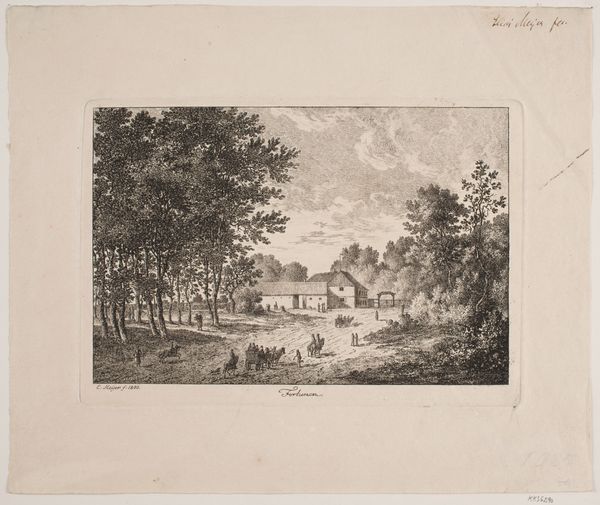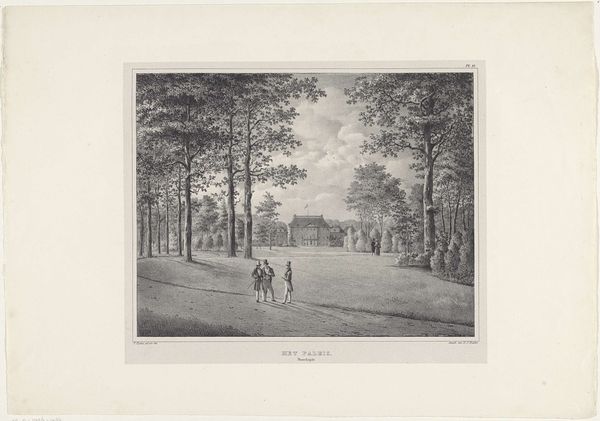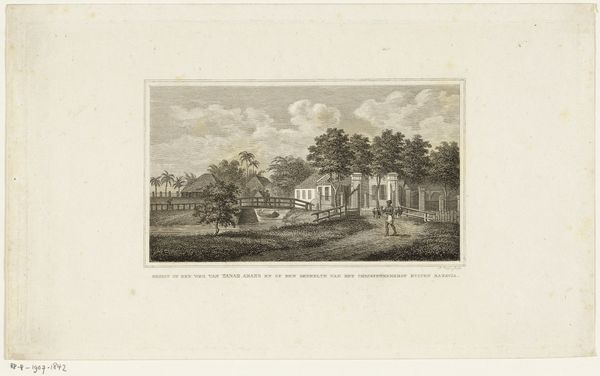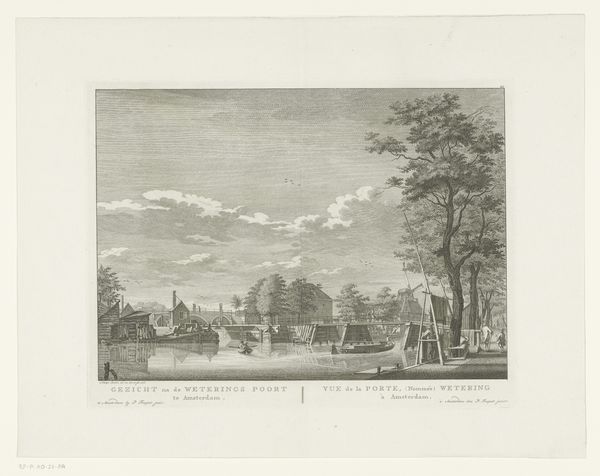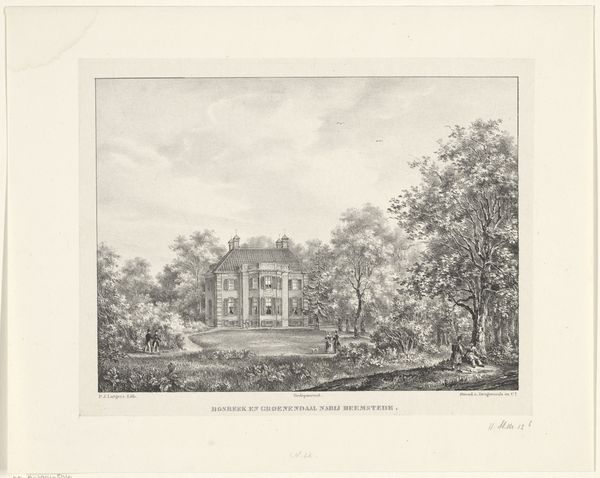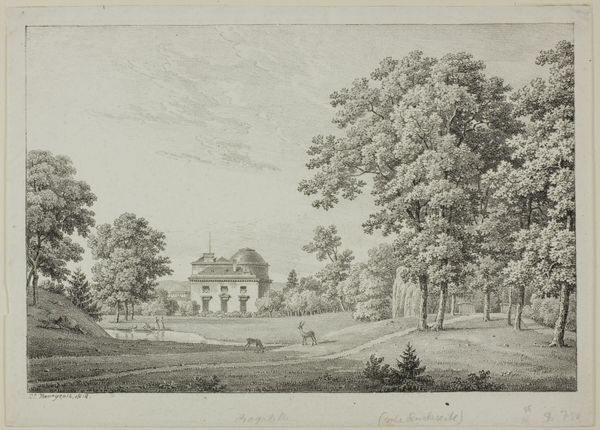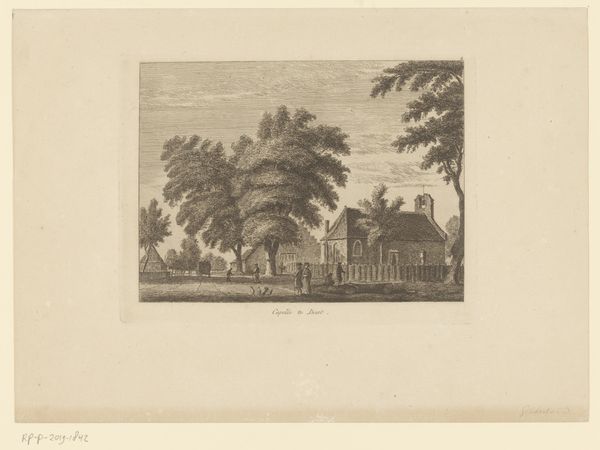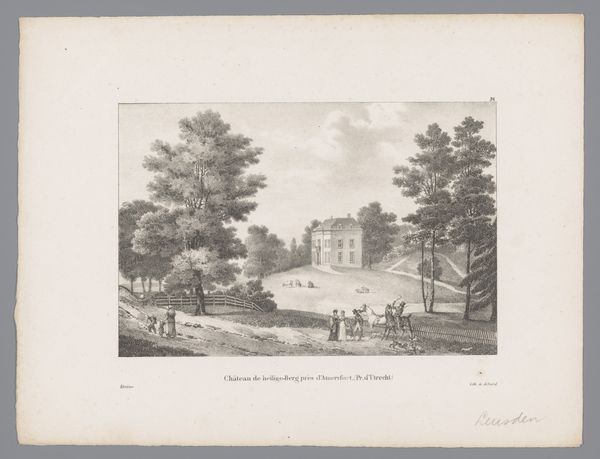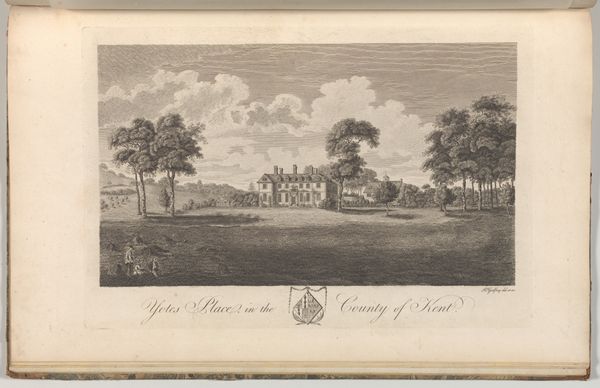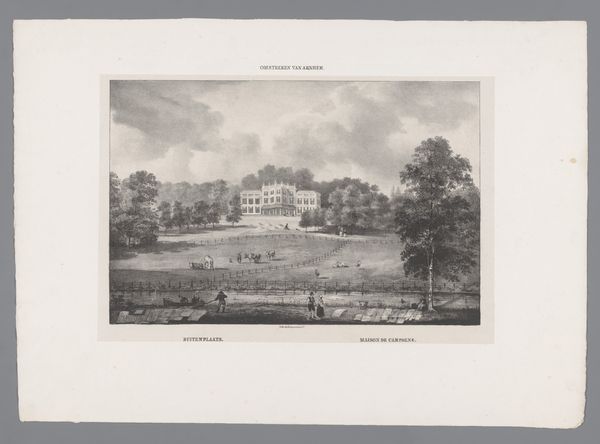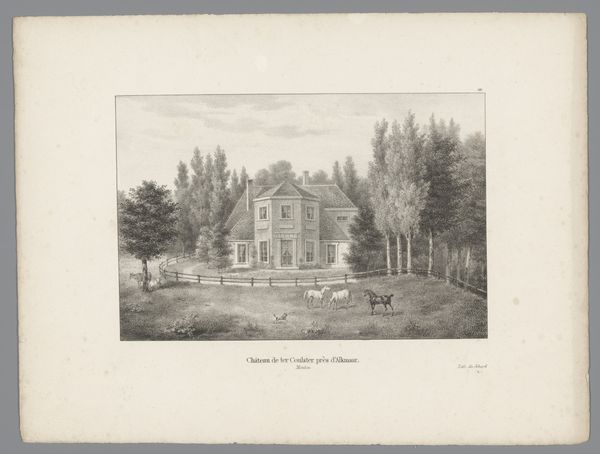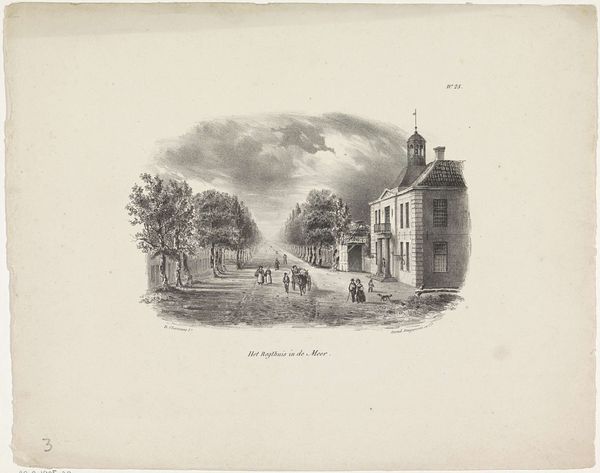
print, etching, engraving
#
pencil drawn
#
light pencil work
#
pale palette
#
ink paper printed
# print
#
etching
#
pencil sketch
#
landscape
#
15_18th-century
#
park
#
cityscape
#
pencil work
#
engraving
Dimensions: height 334 mm, width 480 mm
Copyright: Rijks Museum: Open Domain
Curator: Welcome, everyone. We’re looking at an etching dating from around 1822 to 1845. It is entitled "Westzijde van Paleis Het Loo" and is by an anonymous artist. It offers a view of the west side of the Paleis Het Loo. Editor: It's remarkable how this essentially monochromatic palette conveys such a placid atmosphere. The building seems almost dreamlike; it’s softened by the pale hues and rendered gentle, almost picturesque. Curator: Absolutely. It depicts a meticulously maintained palace park and captures the way palaces used to be portrayed. Think of the late 18th- and early 19th-century fascination with nature and the creation of landscape parks—spaces not just for display but also for leisure and reflection. Images like this played a role in shaping public perception of royalty and governance. Editor: And consider the artist’s choices in representing this landscape. The carefully etched lines, especially in the foliage and clouds, create a strong sense of texture and depth despite the limited tonal range. Notice, too, how the artist positions the viewer low and in the field itself, as if inviting the public to partake in the scene. Curator: That's right, placing us amidst what was previously exclusively royal territory. We can think of how the proliferation of prints such as these played a crucial role in the democratization of images, allowing people from a broader socio-economic spectrum to access and interpret imagery related to the monarchy. Editor: Precisely. In its composition, one can see the geometric order reflected in the symmetry of the palace structure mirrored, but softened, in the natural composition of the surrounding landscape, a dance between nature and formal design. Curator: Looking at this piece, I'm reminded how art served to broadcast political ideas, shaping popular views of power and privilege. Editor: And it’s fascinating to me how its very composition and etching technique evoke this specific moment and its cultural sensibility. Curator: A potent piece, one rich in cultural undertones that reveal so much about the way royal identity was communicated and consumed in that era. Editor: Indeed, and its masterful use of tonal variation and texture contribute significantly to the overall experience of serenity and, frankly, regalness it presents.
Comments
No comments
Be the first to comment and join the conversation on the ultimate creative platform.
